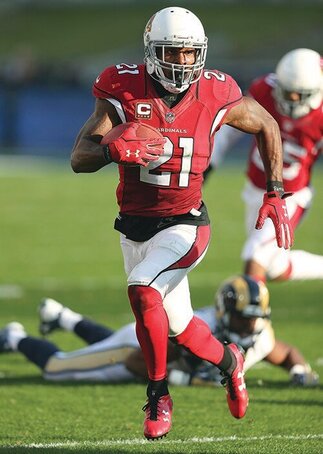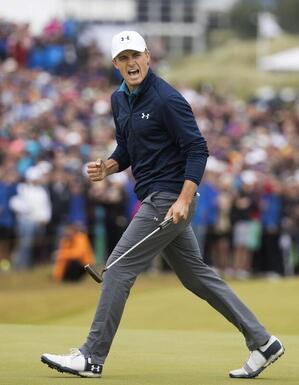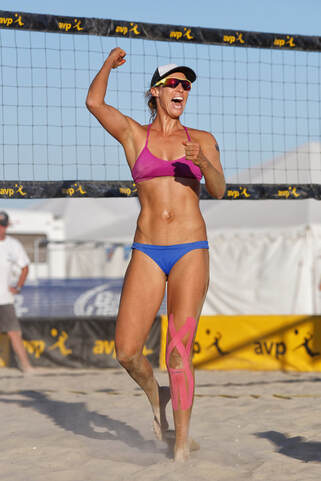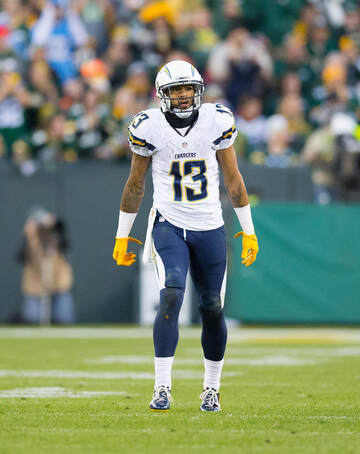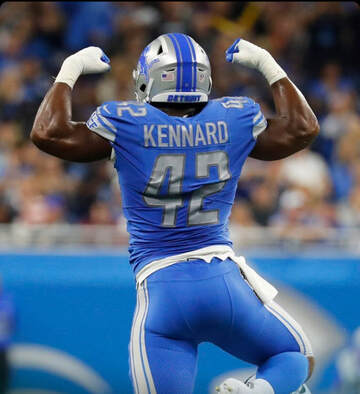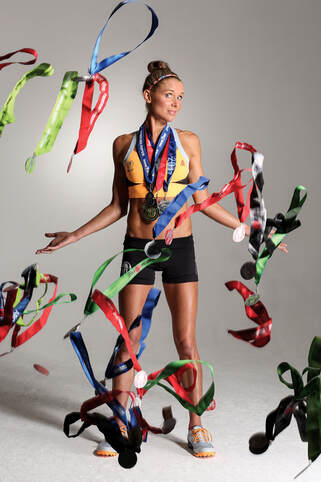LIGHT THERAPY
&
MUSCLE RECOVERY
&
MUSCLE RECOVERY
A significant number of independent clinical research has shown light therapy has a positive impact on recovery and performance. For this reason a growing number active people from elite athletes to casual exercisers are incorporating this therapy into their regimen. Many see longer, stronger workouts as a result, all the while feeling more energy and less soreness.
So what mechanisms create this beneficial reaction? Scientists suggest it is the increased antioxidants, heat proteins, improved circulation, and oxygen/nutrient flow that may be the reason so many studies show incredible effects. Eliminating oxidative stress is important because it is associated with muscle fatigue, plus antioxidants cause heightened production of heat shock proteins which protect cells from stress and early cell death!
In addition, studies show light therapy causes increased circulation, resulting in more oxygen & nutrients being delivered to muscle tissue while ridding the tissue of toxic byproducts.
So what mechanisms create this beneficial reaction? Scientists suggest it is the increased antioxidants, heat proteins, improved circulation, and oxygen/nutrient flow that may be the reason so many studies show incredible effects. Eliminating oxidative stress is important because it is associated with muscle fatigue, plus antioxidants cause heightened production of heat shock proteins which protect cells from stress and early cell death!
In addition, studies show light therapy causes increased circulation, resulting in more oxygen & nutrients being delivered to muscle tissue while ridding the tissue of toxic byproducts.
SCIENTIFIC EVIDENCE
Delayed onset muscle soreness: Delayed onset muscle soreness (DOMS) is pain and stiffness you feel 24 to 72 hours after a workout or strenuous activity. A double-blind, randomized trial assessed light therapy, exercise, and DOMS, and concluded:
Less soreness & damage after intense workouts: A 2014 trial tested red light therapy for the muscle recovery of healthy young men after undergoing a “damaging eccentric exercise.” The light therapy group showed significantly reduced muscle strength loss, less muscle soreness, and fewer range of motion impairments, and that was demonstrated up to 4 days after a damaging exercise. [7]
Postmenopausal women feel less soreness from exercise: Light therapy has proven clinically effective at reducing muscle soreness for a wide range of populations, with especially encouraging results for postmenopausal women combining red light therapy with exercise.
In addition to improving quadricep performance, a 2014 trial also found that red light therapy “reduces peripheral fatigue in postmenopausal women.” [8] Infrared-LED therapy associated with treadmill training has also been shown to improve muscle power and delay leg fatigue in postmenopausal women. [9]
Less running damage: A 2012 trial concluded that runners in the light therapy group experienced decreased “exercise-induced oxidative stress and muscle damage.” Researchers stated that the modulation of the redox system (reducing oxidative stress) by light therapy likely led to a delay and reduction in skeletal muscle fatigue after running. [10]
Less knee muscle fatigue: A recent 2018 study found that red light therapy applied before and after exercise reduced knee muscle fatigue. [11] Similar results of a trial on knee muscle fatigue in 2010 found that light therapy before exercise was an effective way to prevent the increase of muscle proteins in the blood serum.” [12]
Lower creatine kinase levels point to less muscle damage with light therapy: Creatine kinase (CK) is a vital enzyme in your body that you make in greater numbers in response to muscle damage and tissue injury. As a result, it’s commonly used in blood tests to assess muscle damage. [16]
Many studies have shown a significant decrease in CK levels following light therapy. A 2018 systematic review and meta-analysis was conducted in the Clinical Journal of Sports Medicine, to assess the muscular effects of light therapy, especially concerning creatine kinase levels after exercise. After reviewing 14 studies, the authors concluded that light therapy has a positive effect on the control of creatine kinase activity. [17]
In 2015, researchers performed a systematic review and meta-analysis of numerous randomized, placebo-controlled trials on red light therapy and muscular recovery and performance. Based on the body of research, the authors concluded that red light therapy “improves muscular performance and accelerates recovery.” [18]
Pro volleyball players recover faster with red light: Beach volleyball is incredibly taxing on leg and stomach muscles, but top players have responded extremely well to red light therapy. A double-blind, placebo-controlled trial tested pro volleyball players and found this about the light therapy group:
“Post-exercise levels of biochemical markers decreased significantly: Blood Lactate, Creatine Kinase, and C-Reactive Protein levels.” [19]
Research shows pro soccer & rugby players recover faster with red light therapy: Recent clinical studies on professional rugby and soccer players assessed male athletes’ endurance, speed, and ability to recover from demanding games and workouts. Researchers found that red light therapy accelerated the players’ recovery times, leading the authors of both studies to recommend red light therapy for athletic recovery.
The results on the rugby field matched the lab results: rugby players receiving light therapy treatments saw a “significantly decreased percentage of change in blood lactate levels (p ≤ 0.05) and perceived fatigue (p ≤ 0.05).” [20,21]
Recovering from demanding workouts: Researchers in the 2014 trial cited above found light therapy lessens muscle soreness after strenuous exercise, and also that a single red light therapy treatment immediately after a damaging exercise was effective at reducing muscle soreness and strength loss. [7]
Quicker recovery for postmenopausal women: As with the research on preventing muscle fatigue, postmenopausal women showed impressive muscle recovery results with red light therapy. In 2013, a team of researchers analyzed the exercise tolerance and muscle recovery of 30 postmenopausal women over 6 months. One group received near infrared light therapy and did treadmill training, the other just the treadmill.
Researchers found that “time of recovery showed a significant decrease only in the LED group.” They concluded that light therapy and training “can improve maximal performance and post-exercise recovery in postmenopausal women.” [22]
Bottom Line: Red and Infrared Light Therapy Speeds Muscle Recovery and Prevents Muscle Soreness. Study after study has shown red light therapy both prevents muscle soreness, and speeds muscle recovery after exercise. You don’t have to be an Olympian to see the benefits of light therapy though. Clinical research has demonstrated red light therapy’s effectiveness with men and women, from young adults to seniors, and across the fitness spectrum, from professional athletes to everyday "Joes and Janes".
- “The light therapy group exhibited a significant decrease in pain associated with DOMS.”
- “The McGill Pain Questionnaire showed a significant difference in pain scores at the 48-hour period.”
- Conclusion: Light therapy “provides a beneficial effect to patients who may experience DOMS after an exercise session.” [4]
Less soreness & damage after intense workouts: A 2014 trial tested red light therapy for the muscle recovery of healthy young men after undergoing a “damaging eccentric exercise.” The light therapy group showed significantly reduced muscle strength loss, less muscle soreness, and fewer range of motion impairments, and that was demonstrated up to 4 days after a damaging exercise. [7]
Postmenopausal women feel less soreness from exercise: Light therapy has proven clinically effective at reducing muscle soreness for a wide range of populations, with especially encouraging results for postmenopausal women combining red light therapy with exercise.
In addition to improving quadricep performance, a 2014 trial also found that red light therapy “reduces peripheral fatigue in postmenopausal women.” [8] Infrared-LED therapy associated with treadmill training has also been shown to improve muscle power and delay leg fatigue in postmenopausal women. [9]
Less running damage: A 2012 trial concluded that runners in the light therapy group experienced decreased “exercise-induced oxidative stress and muscle damage.” Researchers stated that the modulation of the redox system (reducing oxidative stress) by light therapy likely led to a delay and reduction in skeletal muscle fatigue after running. [10]
Less knee muscle fatigue: A recent 2018 study found that red light therapy applied before and after exercise reduced knee muscle fatigue. [11] Similar results of a trial on knee muscle fatigue in 2010 found that light therapy before exercise was an effective way to prevent the increase of muscle proteins in the blood serum.” [12]
Lower creatine kinase levels point to less muscle damage with light therapy: Creatine kinase (CK) is a vital enzyme in your body that you make in greater numbers in response to muscle damage and tissue injury. As a result, it’s commonly used in blood tests to assess muscle damage. [16]
Many studies have shown a significant decrease in CK levels following light therapy. A 2018 systematic review and meta-analysis was conducted in the Clinical Journal of Sports Medicine, to assess the muscular effects of light therapy, especially concerning creatine kinase levels after exercise. After reviewing 14 studies, the authors concluded that light therapy has a positive effect on the control of creatine kinase activity. [17]
In 2015, researchers performed a systematic review and meta-analysis of numerous randomized, placebo-controlled trials on red light therapy and muscular recovery and performance. Based on the body of research, the authors concluded that red light therapy “improves muscular performance and accelerates recovery.” [18]
Pro volleyball players recover faster with red light: Beach volleyball is incredibly taxing on leg and stomach muscles, but top players have responded extremely well to red light therapy. A double-blind, placebo-controlled trial tested pro volleyball players and found this about the light therapy group:
“Post-exercise levels of biochemical markers decreased significantly: Blood Lactate, Creatine Kinase, and C-Reactive Protein levels.” [19]
Research shows pro soccer & rugby players recover faster with red light therapy: Recent clinical studies on professional rugby and soccer players assessed male athletes’ endurance, speed, and ability to recover from demanding games and workouts. Researchers found that red light therapy accelerated the players’ recovery times, leading the authors of both studies to recommend red light therapy for athletic recovery.
The results on the rugby field matched the lab results: rugby players receiving light therapy treatments saw a “significantly decreased percentage of change in blood lactate levels (p ≤ 0.05) and perceived fatigue (p ≤ 0.05).” [20,21]
Recovering from demanding workouts: Researchers in the 2014 trial cited above found light therapy lessens muscle soreness after strenuous exercise, and also that a single red light therapy treatment immediately after a damaging exercise was effective at reducing muscle soreness and strength loss. [7]
Quicker recovery for postmenopausal women: As with the research on preventing muscle fatigue, postmenopausal women showed impressive muscle recovery results with red light therapy. In 2013, a team of researchers analyzed the exercise tolerance and muscle recovery of 30 postmenopausal women over 6 months. One group received near infrared light therapy and did treadmill training, the other just the treadmill.
Researchers found that “time of recovery showed a significant decrease only in the LED group.” They concluded that light therapy and training “can improve maximal performance and post-exercise recovery in postmenopausal women.” [22]
Bottom Line: Red and Infrared Light Therapy Speeds Muscle Recovery and Prevents Muscle Soreness. Study after study has shown red light therapy both prevents muscle soreness, and speeds muscle recovery after exercise. You don’t have to be an Olympian to see the benefits of light therapy though. Clinical research has demonstrated red light therapy’s effectiveness with men and women, from young adults to seniors, and across the fitness spectrum, from professional athletes to everyday "Joes and Janes".
LIGHT THERAPY PRO'S
Scientific Sources:
[1] Avni D, Levkovitz S, Maltz L, Oron U. Protection of skeletal muscles from ischemic injury: low-level laser therapy increases antioxidant activity. Photomed Laser Surg. 2005;23:273–277.
[2] Rizzi CF, Mauriz JL, Freitas Correa DS, et al. Effects of low-level laser therapy (LLLT) on the nuclear factor (NF)-kappaB signaling pathway in traumatized muscle. Lasers Surg Med. 2006;38:704–713.
[3] Tullberg M, Alstergren PJ, Ernberg MM. Effects of low-power laser exposure on masseter muscle pain and microcirculation. Pain. 2003;105:89–96.
[4] Douris P, Southard V, et al. Effect of phototherapy on delayed onset muscle soreness. Photomedicine and Laser Surgery. 2006 Jun;24(3):377-82.
[5] Antonialli FC, De Marchi T, Tomazoni SS, et al. Phototherapy in skeletal muscle performance and recovery after exercise: effect of combination of super-pulsed laser and light-emitting diodes. Lasers in Medical Science. 2014 Nov;29(6):1967-76.
[6] Leal Junior EC, Lopes-Martins RA, Dalan F, et al. Effect of 655-nm low-level laser therapy on exercise-induced skeletal muscle fatigue in humans. Photomed Laser Surg. 2008 Oct;26(5):419-24.
[7] Borges LS, et al. Light-emitting diode phototherapy improves muscle recovery after a damaging exercise. Lasers in Medical Science. 2014 May;29(3):1139-44.
[8] Paolillo FR, Corazza AV, et al. Phototherapy during treadmill training improves quadriceps performance in postmenopausal women. Climacteric. 2014 Jun;17(3):285-93.
[9] Paolillo FR, Milan JC, Aniceto IV, et al. Effects of infrared-LED illumination applied during high-intensity treadmill training in postmenopausal women. Photomedicine in Laser Surg. 2011 Sep;29(9):639-45.
[10] De Marchi T, Leal Junior EC, et al. Low-level laser therapy (LLLT) in human progressive-intensity running: effects on exercise performance, skeletal muscle status, and oxidative stress. Lasers in Medical Science. 2012 Jan;27(1):231-6.
[11] Rossato M, et al. Time Response of Photobiomodulation Therapy on Muscular Fatigue in Humans. Journal of Strength and Conditioning Research. 2018 Nov;32(11):3285-3293.
[12] Baroni BM, et al. Low level laser therapy before eccentric exercise reduces muscle damage markers in humans. Eur J Appl Physiol. 2010 Nov;110(4):789-96.
[13] Bjordal JM, Lopes-Martins RA, Iversen VV. A randomised, placebo controlled trial of low level laser therapy for activated achilles tendinitis with microdialysis measurement of peritendinous prostaglandin E2 concentrations. Br J Sports Med. 2006;40:76–80.
[14] Aimbire F, Albertini R, Pacheco MT, et al. Low-level laser therapy induces dose-dependent reduction of TNF alpha levels in acute inflammation. Photomed Laser Surg. 2006;24:33–37.
[15] Hemvani N, Chitnis DS, George M, Chammania S. In vitro effect of nitrogen and He-Ne laser on the apoptosis of human polymorphonuclear cells from burn cases and healthy volunteers. Photomed Laser Surg. 2005;23:476–479.
[16] University of Rochester Medical Center. Health Encyclopedia, Creatine Kinase.
[17] Machado AF, et al. Phototherapy on Management of Creatine Kinase Activity in General Versus Localized Exercise: A Systematic Review and Meta-Analysis. Clinical Journal of Sports Medicine. 2018 Jun 21
[18] Leal-Junior EC, Vanin AA, Miranda EF, et al. Effect of phototherapy (low-level laser therapy and light-emitting diode therapy) on exercise performance and markers of exercise recovery: a systematic review with meta-analysis. Lasers in Medical Science. 2015 Feb;30(2):925-39.
[19] Leal Junior EC, Lopes-Martins RA, Rossi RP, et al. Effect of cluster multi-diode light emitting diode therapy (LEDT) on exercise-induced skeletal muscle fatigue and skeletal muscle recovery in humans. Lasers in Surgical Medicine. 2009 Oct;41(8):572-7.
[20] Pinto HD, Vanin AA, et al. Photobiomodulation Therapy Improves Performance and Accelerates Recovery of High-Level Rugby Players in Field Test: A Randomized, Crossover, Double-Blind, Placebo-Controlled Clinical Study. Journal of Strength and Conditioning Research. 2016 Dec;30(12):3329-3338.
[21] De Marchi T, Leal-Junior ECP, et al. Photobiomodulation therapy before futsal matches improves the staying time of athletes in the court and accelerates post-exercise recovery. Lasers in Medical Science. 2018 Sep 27
[22] Paolillo FR, Corazza AV, et al. Infrared LED irradiation applied during high-intensity treadmill training improves maximal exercise tolerance in postmenopausal women: a 6-month longitudinal study. Lasers in Medical Science. 2013 Feb;28(2):415-22.
[23] de Paiva PR, Tomazoni SS, et al. Photobiomodulation therapy (PBMT) and/or cryotherapy in skeletal muscle restitution, what is better? A randomized, double-blinded, placebo-controlled clinical trial. Lasers in Medical Science. 2016 Dec;31(9):1925-1933.
[24] X. H. Li. Laser in rhe Department of Traumatology. Laser Therapy. 1990; Vol. 2 Issue 3, pp. 119-122.
The information provided on our website is for educational purposes only and is not intended to diagnose, treat, cure, or prevent any disease. It's not a substitute for a face-to-face consultation with your healthcare provider, and should not be construed as medical advice.
[1] Avni D, Levkovitz S, Maltz L, Oron U. Protection of skeletal muscles from ischemic injury: low-level laser therapy increases antioxidant activity. Photomed Laser Surg. 2005;23:273–277.
[2] Rizzi CF, Mauriz JL, Freitas Correa DS, et al. Effects of low-level laser therapy (LLLT) on the nuclear factor (NF)-kappaB signaling pathway in traumatized muscle. Lasers Surg Med. 2006;38:704–713.
[3] Tullberg M, Alstergren PJ, Ernberg MM. Effects of low-power laser exposure on masseter muscle pain and microcirculation. Pain. 2003;105:89–96.
[4] Douris P, Southard V, et al. Effect of phototherapy on delayed onset muscle soreness. Photomedicine and Laser Surgery. 2006 Jun;24(3):377-82.
[5] Antonialli FC, De Marchi T, Tomazoni SS, et al. Phototherapy in skeletal muscle performance and recovery after exercise: effect of combination of super-pulsed laser and light-emitting diodes. Lasers in Medical Science. 2014 Nov;29(6):1967-76.
[6] Leal Junior EC, Lopes-Martins RA, Dalan F, et al. Effect of 655-nm low-level laser therapy on exercise-induced skeletal muscle fatigue in humans. Photomed Laser Surg. 2008 Oct;26(5):419-24.
[7] Borges LS, et al. Light-emitting diode phototherapy improves muscle recovery after a damaging exercise. Lasers in Medical Science. 2014 May;29(3):1139-44.
[8] Paolillo FR, Corazza AV, et al. Phototherapy during treadmill training improves quadriceps performance in postmenopausal women. Climacteric. 2014 Jun;17(3):285-93.
[9] Paolillo FR, Milan JC, Aniceto IV, et al. Effects of infrared-LED illumination applied during high-intensity treadmill training in postmenopausal women. Photomedicine in Laser Surg. 2011 Sep;29(9):639-45.
[10] De Marchi T, Leal Junior EC, et al. Low-level laser therapy (LLLT) in human progressive-intensity running: effects on exercise performance, skeletal muscle status, and oxidative stress. Lasers in Medical Science. 2012 Jan;27(1):231-6.
[11] Rossato M, et al. Time Response of Photobiomodulation Therapy on Muscular Fatigue in Humans. Journal of Strength and Conditioning Research. 2018 Nov;32(11):3285-3293.
[12] Baroni BM, et al. Low level laser therapy before eccentric exercise reduces muscle damage markers in humans. Eur J Appl Physiol. 2010 Nov;110(4):789-96.
[13] Bjordal JM, Lopes-Martins RA, Iversen VV. A randomised, placebo controlled trial of low level laser therapy for activated achilles tendinitis with microdialysis measurement of peritendinous prostaglandin E2 concentrations. Br J Sports Med. 2006;40:76–80.
[14] Aimbire F, Albertini R, Pacheco MT, et al. Low-level laser therapy induces dose-dependent reduction of TNF alpha levels in acute inflammation. Photomed Laser Surg. 2006;24:33–37.
[15] Hemvani N, Chitnis DS, George M, Chammania S. In vitro effect of nitrogen and He-Ne laser on the apoptosis of human polymorphonuclear cells from burn cases and healthy volunteers. Photomed Laser Surg. 2005;23:476–479.
[16] University of Rochester Medical Center. Health Encyclopedia, Creatine Kinase.
[17] Machado AF, et al. Phototherapy on Management of Creatine Kinase Activity in General Versus Localized Exercise: A Systematic Review and Meta-Analysis. Clinical Journal of Sports Medicine. 2018 Jun 21
[18] Leal-Junior EC, Vanin AA, Miranda EF, et al. Effect of phototherapy (low-level laser therapy and light-emitting diode therapy) on exercise performance and markers of exercise recovery: a systematic review with meta-analysis. Lasers in Medical Science. 2015 Feb;30(2):925-39.
[19] Leal Junior EC, Lopes-Martins RA, Rossi RP, et al. Effect of cluster multi-diode light emitting diode therapy (LEDT) on exercise-induced skeletal muscle fatigue and skeletal muscle recovery in humans. Lasers in Surgical Medicine. 2009 Oct;41(8):572-7.
[20] Pinto HD, Vanin AA, et al. Photobiomodulation Therapy Improves Performance and Accelerates Recovery of High-Level Rugby Players in Field Test: A Randomized, Crossover, Double-Blind, Placebo-Controlled Clinical Study. Journal of Strength and Conditioning Research. 2016 Dec;30(12):3329-3338.
[21] De Marchi T, Leal-Junior ECP, et al. Photobiomodulation therapy before futsal matches improves the staying time of athletes in the court and accelerates post-exercise recovery. Lasers in Medical Science. 2018 Sep 27
[22] Paolillo FR, Corazza AV, et al. Infrared LED irradiation applied during high-intensity treadmill training improves maximal exercise tolerance in postmenopausal women: a 6-month longitudinal study. Lasers in Medical Science. 2013 Feb;28(2):415-22.
[23] de Paiva PR, Tomazoni SS, et al. Photobiomodulation therapy (PBMT) and/or cryotherapy in skeletal muscle restitution, what is better? A randomized, double-blinded, placebo-controlled clinical trial. Lasers in Medical Science. 2016 Dec;31(9):1925-1933.
[24] X. H. Li. Laser in rhe Department of Traumatology. Laser Therapy. 1990; Vol. 2 Issue 3, pp. 119-122.
The information provided on our website is for educational purposes only and is not intended to diagnose, treat, cure, or prevent any disease. It's not a substitute for a face-to-face consultation with your healthcare provider, and should not be construed as medical advice.


